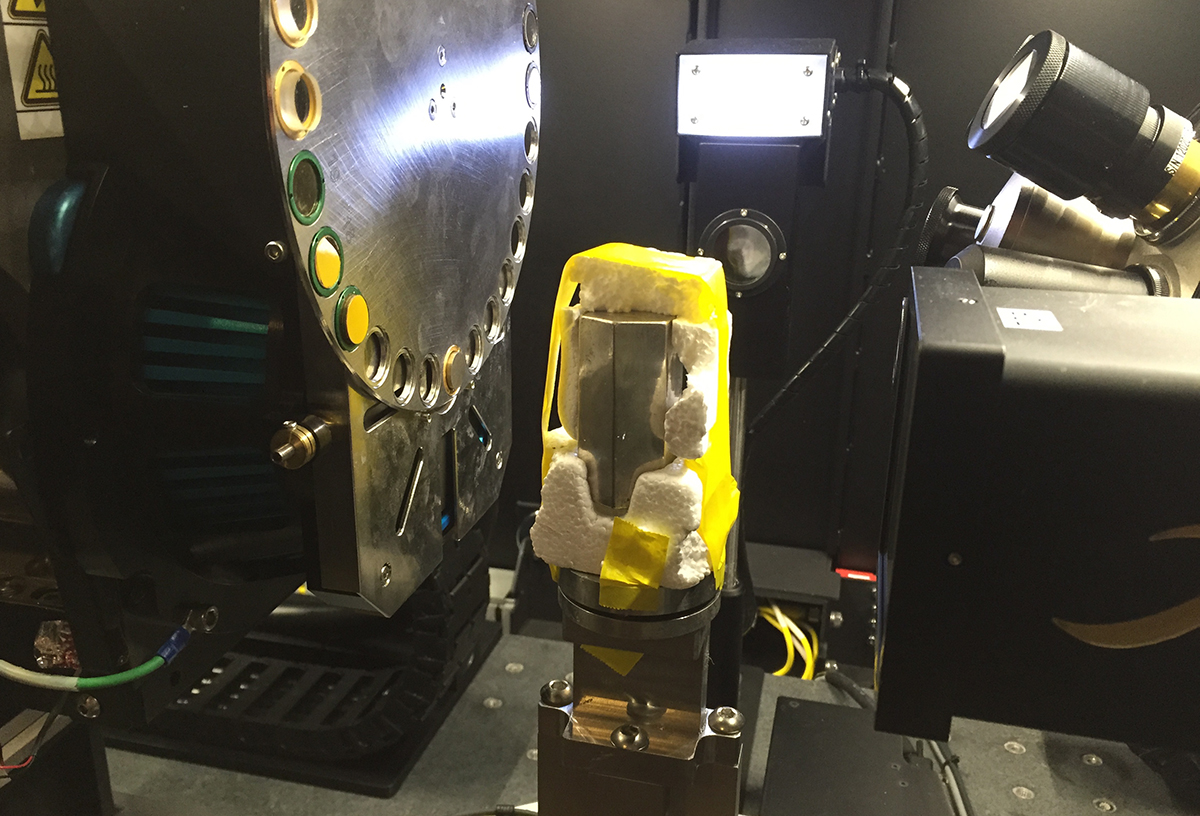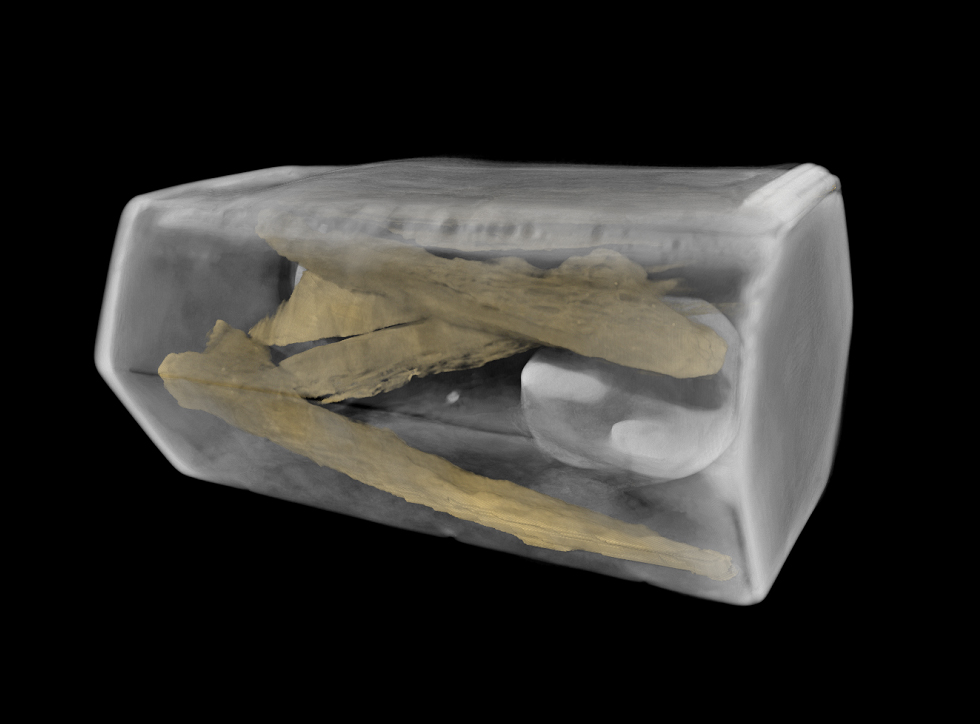Cornell technology identifies artifacts in Jamestown graves
By Krishna Ramanujan


In Jamestown, Virginia, in 2013, archaeologists digging beneath a church built in 1608 made a remarkable discovery in the chancel: four graves. The coffins were long gone, victims of decay, but the coffin nails remained.
The archaeologists were aware of the tradition of burying important people in the chancel, but who were these people? Nobody knew, but they discovered two important clues. One was a small, sealed silver box that had been placed on top of one of the coffins, as evidenced by wood fibers preserved on the bottom of the box. The other was silver thread found in one of the graves.
The team from the Jamestown Rediscovery archaeological project was left with a conundrum: how to use these valuable clues to reveal the identities of the people in the graves without destroying the artifacts. The threads, for example, were extremely fragile, so instead of digging them out and fragmenting them, the team of archaeologists carefully cut away a block of dirt and placed it in a wooden box about the size of a shoebox.
Jamestown Rediscovery senior conservator Michael Lavin and senior staff archaeologist David Givens had been working with researchers at the Smithsonian Institution’s National Museum of Natural History, who suggested they contact Mark Riccio, a research engineer and director of the Cornell Biotechnology Resource Center’s CT (computed tomography) scanning facilities, to analyze them. The facility, part of Cornell’s Institute of Biotechnology, employs high resolution X-ray scanners to acquire without damage detailed 3-D datasets of the innards of objects and organisms..
“I called Mark from the dig site, and we spoke of the silver thread in the dirt and the silver box, and he said, sure, let’s give it a try,” said Givens.
When Lavin and Givens arrived in Ithaca, Riccio developed protocols to scan the objects. One scan revealed silver and silk threads and silver spangles embedded in the block of dirt. The team established that the threads belonged to a captain’s sash with silver wires and silk and bullion fringe.
“We were on the fly saying, ‘can you see if the silver wire is hollow?’” which would indicate lamé, a silver thread wrapped around another thread, Lavin said. The silk fabric survived due to salts from copper alloys in the silver, which protected the fibers over time.
“Once we identified the fringe, we could go to period paintings and identify gentlemen in this type of regalia,” said Lavin.
“If you had given me the object, I could interpret the X-ray dataset but I wouldn’t have known enough about the object,” said Riccio. “But sitting with archaeologists, they could ask specific questions, and working together, we could answer those questions” and identify the sash, he said.
After initial CT scans by Micro Photonics staff, Riccio also helped to image inside the small silver box. “Scanning the silver box was very difficult because silver is dense and one of the artifacts inside was made of lead,” said Riccio. But he created new protocols to capture the contents in 3-D. The box then traveled to General Electric for even higher energy CT scans.
The images showed small bones and a lead ampulla that traditionally contained blood, oil or holy water. Using datasets of the contents from Cornell’s CT scan, Micro Photonics staffers used a 3-D printer to re-create models of the bones and the ampulla. The information helped researchers determine that the bones were likely human and the silver box was a Catholic reliquary, a curious find in the grave of an English settler buried in the chancel of an Anglican church – the same church where Pocahontas married John Rolfe on April 5, 1614.
Armed with such forensic analyses of artifacts and archival research of high-status men present in the colony from 1608 to 1617 (when the church became dilapidated), the four men in the graves were identified as:
- Capt. Gabriel Archer, a critic and rival of John Smith and one of the most important early leaders. The silver reliquary was found on top of Archer’s coffin, suggesting he may have been a secret Catholic. Riccio plans to team with the group to see if finer scans can identify whether the ampulla bears an insignia.
- Capt. William West was killed fighting elite Native American warriors in 1610 and was buried with the sash, a symbol of his rank.
- The Rev. Robert Hunt, the first Anglican (Church of England) minister at Jamestown.
- Sir Ferdinando Wainman, a high-ranking officer and the first English knight buried in America.
Records reveal Archer’s parents were fined in the late 16th century for being recusants – Catholics who refused to join the Anglican church.
“Maybe Archer had been part of a nonpracticing Catholic cell in Jamestown, and the reliquary was personal and hidden,” said Lavin. “Someone in the cell could have secretly placed it on his coffin. But it’s still not clear that it was a Catholic artifact.”
There are other theories, Givens said. The reliquary could have significance in the founding of the first English Protestant church at Jamestown. Also, Archer died during the Starving Time, a period of starvation during the winter of 1609-10. It could have been a practice to bury such important religious objects with a high-ranking official during hard times in case no one survived, or the colony and church were abandoned, Lavin said.
Media Contact
Get Cornell news delivered right to your inbox.
Subscribe